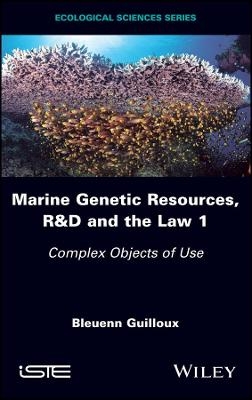
Marine Genetic Resources, R&D and the Law 1
ISTE Ltd and John Wiley & Sons Inc (Verlag)
978-1-78630-224-3 (ISBN)
Guilloux Bleuenn, AMURE, France.
Foreword ix
Introduction xi
Chapter 1. The Scientific Representation of the Living World: A Dual Concept Between Nature’s and Humans’ Shares 1
1.1. Natural sciences: the given living world 2
1.1.1. Taxonomy: the observation of the living world 2
1.1.2. Systematics: the identification of the living world 10
1.2. Life sciences: the constructed living world 18
1.2.1. Biological sciences: the exploration of the living world 18
1.2.2. Bio-technosciences: the instrumentalization of the living world 25
Part 1. Singular Objects Moving Toward Reservation 35
Chapter 2. Exploitable Raw Materials 37
2.1. Genetic material: natural resources defined according to their conditions of appropriation 38
2.1.1. Appropriable natural things 41
2.1.2. Things on the verge of exclusive appropriation 45
2.2. Marine genetic resources: biological resources defined according to their destination 58
2.2.1. Traditional marine living resources exploited for food and industrial purposes 59
2.2.2. New marine biological resources searched for the purposes of scientific and biotechnological valorization 63
Chapter 3. Patentable Biotechnological Inventions 75
3.1. The patentability of life of any origin: an established principle 80
3.1.1. The uncontested patentability of inventions of microorganic origin 81
3.1.2. The logical acceptance of the patentability of inventions of macroorganic origin 87
3.2. The patentability of life in all its forms: a questionable reality 98
3.2.1. An overall commodification of the living world 99
3.2.2. A gradual privatization of research in life sciences 109
Part 2. Global Objects Moving Toward Sharing 117
Chapter 4. Residual Res Communes 119
4.1. Res communes due to disinterest 120
4.1.1. Non-appropriable things as a matter of principle 121
4.1.2. Things of common use 134
4.2. Common resources at risk 137
4.2.1. The tragedy of the genetic pool 138
4.2.2. The tragedy of the scientific “anticommons” 151
Chapter 5. Reconstructing the Commons 157
5.1. Renewal of the commons in a context of global interdependencies 160
5.1.1. Global public goods: a theoretical and global approach to the commons 162
5.1.2. Common-pool resources: a concrete and nuanced approach to the commons 166
5.2. An attempt to apply renewed figures of the commons to marine biodiversity and associated knowledge 172
5.2.1. A desirable communitarization 172
5.2.2. A communitarization difficult to implement 186
Conclusion 197
Appendices 199
Appendix 1. Classical Marine Bioprospecting: Biochemistry and Genetic Engineering 201
Appendix 2. Modern Marine Bioprospecting: Metagenomics 203
Appendix 3. The Drug Research and Development Steps 205
Appendix 4. Risk Assessment in the Bioprospecting Process 207
Appendix 5. Aleatory Component Comparison in Fishing and Bioprospecting 209
Appendix 6. Patent Claims Over Genes of Marine Origin 211
Appendix 7. Illustrative Database on Marine Biotechnological Innovations 213
Bibliography 231
Index 263
| Erscheinungsdatum | 11.08.2018 |
|---|---|
| Verlagsort | London |
| Sprache | englisch |
| Maße | 160 x 239 mm |
| Gewicht | 612 g |
| Themenwelt | Naturwissenschaften ► Biologie ► Genetik / Molekularbiologie |
| Naturwissenschaften ► Biologie ► Limnologie / Meeresbiologie | |
| ISBN-10 | 1-78630-224-1 / 1786302241 |
| ISBN-13 | 978-1-78630-224-3 / 9781786302243 |
| Zustand | Neuware |
| Haben Sie eine Frage zum Produkt? |
aus dem Bereich


